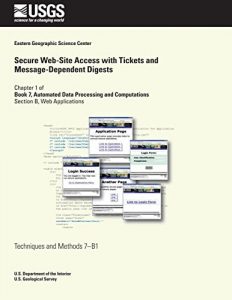1. Large Area Spectral Yield Model for Wheat (Classic Reprint)
Authored by Pat Ashburn, this book provides valuable insights into wheat yield models that are essential for both amateurs and professionals in agriculture. The Large Area Spectral Yield Model for Wheat delves into advanced methodologies to assess and improve wheat production across vast areas, offering essential knowledge for agricultural engineers, researchers, and farmers alike. Furthermore, this classic reprint facilitates a deeper understanding of yield variability and the factors that influence it, making it a must-read for all agricultural stakeholders.
2. Growth and Yield of Slash Pine Plantations (Classic Reprint)
In this essential volume by Frank A. Bennett, readers are presented with a comprehensive look at the growth patterns and yield forecasts of Slash Pine plantations. Drawing on extensive research, this book addresses the intricacies of pine plantations and their role in sustainable forestry practices. It serves as an enlightening guide for forest managers and landowners keen on optimizing their plantations for maximum yield while maintaining ecological balance. The data-driven approach in this reprint will surely enhance your understanding of forest growth dynamics.
3. Yield Tables for Managed Stands With Special Reference to the Black Hills (Classic Reprint)
Written by Clifford Albert Myers, this book is a vital resource for understanding the yield dynamics of managed forest stands, particularly in the Black Hills region. The meticulously compiled yield tables offer practical information that assists foresters in making informed decisions regarding timber management. By evaluating historical yield data, readers will gain insights into the productivity of various species and the implications for sustainable forestry practices. It’s a must-have for anyone involved in forest management or studying forestry and environmental science.
4. Gross Yield and Mortality Tables for Fully Stocked Stands of Douglas-Fir, Vol. 14 (Classic Reprint)
This comprehensive guide by George R. Staebler introduces critical gross yield and mortality data essential for managing Douglas-Fir stands. Perfect for forestry professionals, the tables within this volume provide insights into the performance and sustainability of Douglas-Fir, which is one of North America’s most commercially valuable species. The methodologies and statistics presented facilitate advanced planning and decision-making for the long-term health of forestry operations. It’s an essential read for foresters invested in maintaining healthy, productive timber stands.
5. Variability of Wheat Yields in the Great Plains (Classic Reprint)
Donald K. Larson’s book takes a detailed look at the complexities and fluctuations in wheat yields across the Great Plains. By examining historical data and agricultural practices, this essential resource offers valuable perspectives for farmers and agricultural researchers. Understanding the factors contributing to yield variability allows for better strategic planning and improved crop management practices. This book is an indispensable addition to the libraries of those dedicated to improving agricultural productivity in challenging growing conditions.
6. Douglas-Fir Managed Yield Simulator: Dfit User’s Guide (Classic Reprint)
Authored by David Bruce, this user’s guide is crucial for professionals who employ the Dfit simulation tool for managing Douglas-Fir stands. The guide provides step-by-step instructions alongside practical applications of the simulator, enabling users to make precise predictions of growth and yield. This resource is indispensable for forest managers looking to optimize their operations, ensuring a blend of ecological conservation and economic returns. A must-read for anyone involved in the technical side of forestry management.
7. Growth and Yield of Well-Stocked Aspen and Birch Stands in Alaska (Classic Reprint)
Robert A. Gregory presents an insightful evaluation of growth patterns in Aspen and Birch stands in Alaska. This book serves as a key resource for understanding the ecological dynamics that affect growth and timber yield in the colder climates of the North. Through rigorous analysis, the findings shed light on effective management strategies for these species, making it essential reading for ecologists and forestry practitioners alike.
8. Gross and Net Yield Tables for Lodgepole Pine (Classic Reprint)
Walter G. Dahms’ remarkable compilation of yield tables provides a comprehensive overview of both gross and net yields for Lodgepole Pine, an essential timber species in North American forestry. Readers will find detailed tables that facilitate the understanding of yield potentials and management decisions, making this an invaluable resource for foresters looking to enhance productivity while ensuring environmental sustainability.
9. Increasing Growth and Yield of Young Spruce Pulpwood Stands by Girdling Hardwoods (Classic Reprint)
Marinus Westveld presents a unique approach for inducing growth in young Spruce pulpwood stands through innovative girdling techniques. This book is essential for those managing young stands and looking for effective strategies to stimulate growth while reducing competition from hardwoods. The practical insights and results derived from the methodologies can significantly enhance yield metrics, making it a vital read for pulpwood forestry and management.
10. Timber Yield and Financial Return Performance of the 1974 Forestry Incentives Program (Classic Reprint)
Last but not least, Thomas John Mills’ analysis allows readers to understand the financial implications of forestry initiatives through concrete data on yield performance. This book serves as a historical perspective that intertwines economic performance with timber management, aiding decision-makers in evaluating the success of incentive programs. As more sustainable forestry practices arise, this reflective piece offers valuable lessons for current and future initiatives.














































